Pipes are the unsung heroes of our homes and buildings, carrying water, gas, and other essential utilities to every corner. However, these vital components are often out of sight and out of mind until a problem arises. One of the best ways to ensure the longevity and functionality of your pipes is by using pipewrap, a simple yet highly effective solution. In this comprehensive guide, we will delve deep into the world of pipewrap, exploring its importance, types, installation methods, and the benefits it offers. By the end of this article, you’ll have a thorough understanding of how pipewrap can protect your pipes and save you from potential disasters.
What are the benefits of insulation on pipes?
Using pipe wrap offers a multitude of benefits, making it a wise investment for homeowners and businesses alike:
Prevents Corrosion: Pipewrap acts as a barrier against moisture, preventing corrosion and extending the lifespan of the pipes.
Energy Efficiency: Properly insulated pipes lead to reduced heat loss, improving energy efficiency in heating systems and lowering utility bills.
Prevents Freezing: In cold climates, pipewrap prevents pipes from freezing by providing insulation against low temperatures.
Reduces Condensation: Insulated pipes are less prone to condensation, preventing water damage and mold growth.
Enhances Safety: Insulated pipes are less likely to burst or leak, reducing the risk of water damage and potential accidents.
Saves Money: By preventing pipe damage and increasing energy efficiency, pipe wrap ultimately saves homeowners and businesses money on repairs and utility bills.
Understanding Pipewrap Types is Essential for Property Owners
The growing importance of pipe insulation in modern construction cannot be overstated, especially in an era where energy efficiency and sustainability are paramount. Properly insulated pipes significantly contribute to conserving energy, reducing heat loss, and cutting down utility costs. For property owners, understanding the different types of pipewrap is essential. Each type, whether it’s fiberglass, foam, rubber, aluminum foil, or PVC, offers distinct advantages and is tailored for specific applications. Having a comprehensive knowledge of these materials empowers property owners to make informed choices that align with their specific needs and environmental conditions. By selecting the right pipewrap type, property owners not only protect their investments by ensuring the longevity and functionality of their pipes but also actively contribute to a greener and more energy-efficient future. In a world where environmental consciousness and economic prudence go hand in hand, understanding pipewrap types has become a fundamental aspect of responsible property ownership.
Different Types of Pipe Insulation
Pipewrap, also known as pipe insulation wrap or pipe wrap tape, is a protective covering that shields pipes from external elements. It comes in various types, each designed to cater to specific needs:
Fiberglass Pipewrap: Fiberglass pipewrap is lightweight and offers excellent thermal insulation. It is resistant to moisture, chemicals, and high temperatures, making it suitable for both indoor and outdoor use.
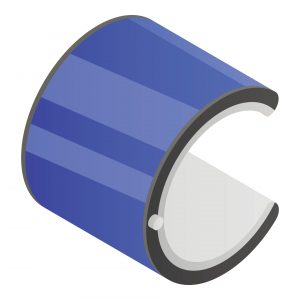
Foam Pipewrap: Foam pipe insulators is easy to install and provides good insulation properties. It is particularly effective in preventing condensation on pipes carrying cold water.
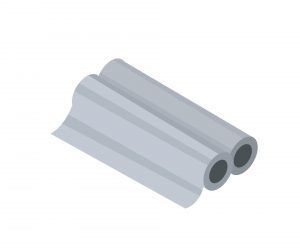
Rubber Pipewrap: Rubber pipewrap is highly flexible and resistant to moisture, making it ideal for pipes in damp or wet environments. It is also durable and can withstand extreme weather conditions.
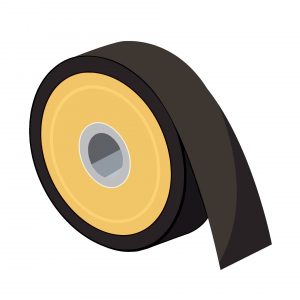
Aluminum Foil Pipewrap: Aluminum foil pipewrap reflects heat and provides insulation. It is often used in HVAC systems to enhance energy efficiency.
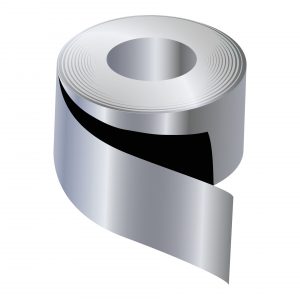
PVC Pipewrap: PVC pipewrap is resistant to chemicals and offers excellent protection against corrosion. It is commonly used in industrial settings where pipes are exposed to harsh substances.
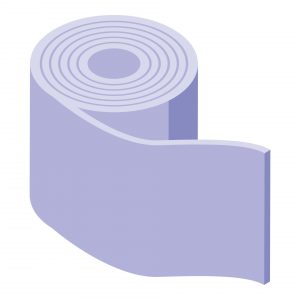
Insulation pipe wrap: A Step-by-Step Guide
Insulation for pipes is a relatively straightforward process that can be done by homeowners or professionals. Here’s a step-by-step guide to help you install pipewrap effectively:
Prepare the Surface: Ensure the pipes are clean and dry before applying insulate pipes. Remove any dirt, rust, or old insulation material.
Measure and Cut: Measure the length of the pipe and cut the pipewrap material accordingly. It’s essential to have a snug fit to maximize insulation effectiveness.
Apply Adhesive (If Required): Some pipewrap materials come with adhesive backing. If your insulating pipes requires adhesive, remove the protective covering and wrap the material tightly around the pipe, pressing firmly to secure it in place.
Overlap Properly: If you are using tape-style pipewrap, ensure that each pipe wrap around overlaps the previous one by at least half its width. This prevents gaps and ensures uniform insulation.
Secure the Ends: Use additional tape or adhesive to secure the ends of the pipewrap, ensuring there are no openings where moisture or air can seep in.
Inspect and Repair: After insulation pipe wrap, inspect the wrapped pipes for any gaps or loose sections. If you find any issues, repair them immediately to maintain the integrity of the insulation.
Troubleshooting Pipewrap Installations: Ensuring a Seamless Shield for Your Pipes
Wrapping pipe insulation can significantly enhance the durability and efficiency of your plumbing system, occasional issues may arise during or after the process. Identifying and addressing these problems promptly is crucial to ensuring your pipes remain well-protected. We will explore common installation mistakes, signs of poorly installed pipewrap, and handy DIY repair tips to troubleshoot any minor problems that might occur.
A. Common Installation Mistakes: How to Avoid Them
- Incomplete Surface Preparation:
Mistake: Inadequate cleaning before installation can hinder the pipewrap’s adhesion.
Solution: Thoroughly clean and dry the pipes before applying the pipewrap to ensure proper bonding.
- Incorrect Overlapping:
Mistake: Incorrect overlapping can create gaps in the insulation, reducing its effectiveness.
Solution: Follow the manufacturer’s guidelines regarding overlapping to ensure a snug fit without gaps.
- Insufficient Adhesive Application:
Mistake: Insufficient adhesive application can lead to loose pipewrap, reducing its protective capabilities.
Solution: Apply adhesive evenly, following the instructions provided, and firmly press the wrap in place for secure adhesion.
B. Signs of Poorly Installed Pipewrap: Identifying Issues Early
- Visible Gaps or Loose Ends:
Issue: Gaps or loose ends indicate improper installation, compromising insulation.
Solution: Reapply pipewrap to cover gaps and secure loose ends, ensuring a seamless fit.
- Condensation Buildup:
Issue: Condensation forming on pipes suggests inadequate insulation, allowing temperature fluctuations.
Solution: Reinforce the insulation by adding an extra layer of pipewrap, especially in areas prone to condensation.
- Deterioration or Mold Growth:
Issue: Deterioration or mold growth under the pipewrap signifies moisture infiltration.
Solution: Remove the damaged section, address the underlying issue causing moisture, and reinstall pipewrap properly.
C. DIY Repair Tips: Fixing Minor Problems with Pipewrap
- Patchwork Repair:
Issue: Small tears or damages in the pipewrap.
Solution: Use compatible patching material to cover the damaged area, ensuring airtight sealing.
- Reinforcement with Tape:
Issue: Loose pipewrap or gaps in insulation.
Solution: Use specialized pipewrap tape to reinforce loose sections and seal gaps, enhancing overall insulation.
- Regular Inspection and Maintenance:
Issue: Potential wear and tear over time.
Solution: Regularly inspect pipewrap for signs of damage, and conduct minor repairs promptly to prevent issues from escalating.
Comparison of Pipe wrap Insulation: Pros and Cons
In the world of pipewrap materials, choosing the right one is pivotal for ensuring the longevity and efficiency of your plumbing system. With options like fiberglass, foam, rubber, aluminum foil, spray pipe insulation, and PVC pipewrap available, it’s essential to understand their pros and cons. In this comprehensive guide, we will delve deep into the strengths and weaknesses of each material, helping you make an informed decision tailored to your specific needs. Additionally, we will explore real-life testimonials, providing firsthand insights into users’ experiences with different pipewrap types.
A. Analyzing Fiberglass, Foam, Rubber, Aluminum Foil, and PVC Pipewrap
1. Fiberglass Pipewrap:
Pros: Lightweight, excellent thermal insulation, resistant to moisture and chemicals.
Cons: Fragile, may require additional protective layer in harsh environments.
2. Foam Pipewrap:
Pros: Easy to install, good insulation properties, effective against condensation.
Cons: Less durable than other materials, may compress over time.
3. Rubber Pipewrap:
Pros: Highly flexible, moisture-resistant, durable, suitable for damp environments.
Cons: Vulnerable to extreme temperatures, may degrade over time.
4. Aluminum Foil Pipewrap:
Pros: Reflects heat, enhances energy efficiency, resistant to moisture.
Cons: Prone to tearing, may require careful handling during installation.
5. PVC Pipewrap:
Pros: Chemical-resistant, protects against corrosion, durable.
Cons: Less flexible than rubber, may crack in very low temperatures.
B. Which Pipe Wrapping Insulation is Ideal for Your Specific Needs?
Choosing the right pipewrap material depends on your unique requirements. For instance, if you’re dealing with a damp environment, rubber pipewrap’s moisture resistance might be invaluable. In areas with extreme temperature fluctuations, fiberglass or foam pipewrap could be preferable due to their excellent thermal insulation properties. Evaluate your specific situation, considering factors like temperature, moisture, and potential wear and tear, to determine the most suitable material for your pipes.
C. Real-Life Testimonials: Users’ Experiences with Different Pipewrap Types
Real-life testimonials provide invaluable insights into the practical aspects of pipewrap materials. Users’ experiences reveal the ease of installation, long-term durability, and ability to withstand varying conditions.
Sarah, a homeowner from New York, shares, “We opted for foam pipewrap, and it made a significant difference in our utility bills. The insulation was easy to install, and even in the freezing winter, our pipes remained warm, preventing any potential issues.”
John, a facilities manager, adds, “In our industrial setting, we found rubber pipewrap to be a lifesaver. Its flexibility allowed us to cover even the most complex pipes, ensuring long-lasting protection against moisture and wear.”
Why Pipe Protection is Crucial: Safeguarding the Lifelines of Your Home
Pipes, the silent heroes of our homes, play a crucial role in our daily lives, ensuring the smooth flow of water, gas, and other essentials. However, these vital conduits often operate unnoticed until a problem arises. Protecting them is not just a matter of convenience; it’s a necessity. The reasons why pipe protection is absolutely crucial, exploring common threats that pipes face and the dire consequences of neglecting their maintenance.
A. Common Threats to Pipes: Corrosion, Physical Damage, and Temperature Fluctuations
1. Corrosion:
Pipes are vulnerable to corrosion, especially in regions with hard water. Over time, this natural process weakens the pipes, leading to leaks and reduced efficiency.
2. Physical Damage:
Whether due to accidental impacts during construction or natural disasters, physical damage can compromise the structural integrity of pipes, making them prone to sudden failures.
3. Temperature Fluctuations:
Extreme temperatures can cause pipes to expand and contract, stressing their materials. This strain can weaken joints and connections, increasing the risk of leaks.
B. Consequences of Neglect: Repair Costs, Water Wastage, and Safety Hazards
1. Repair Costs:
Neglected pipes are a disaster waiting to happen. The longer the issues persist, the more extensive the damage becomes, leading to costly repairs. Timely protection can prevent these expenses.
2. Water Wastage:
Leaking pipes waste an enormous amount of water. In a world facing water scarcity, these precious resources should not be squandered. Protecting pipes prevents unnecessary wastage.
3. Safety Hazards:
Damaged pipes can lead to a variety of safety hazards, including water damage to your property’s structure, electrical issues, and even the growth of hazardous molds. These dangers can be avoided through proactive pipe protection measures.
Environmental Considerations: Eco-Friendly wrap for pipes Solutions
In the realm of environmental considerations and eco-friendly pipe protection solutions, Brodi Pipewrap stands out with its innovative spray-on anti-sweat insulating coating. Designed to address the challenges posed by intricate plumbing installations, this advanced solution goes beyond conventional methods.
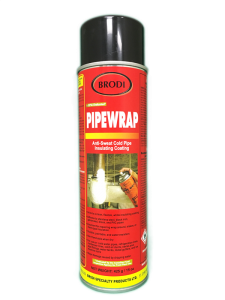
By preventing condensation buildup, Brodi Pipewrap not only ensures the integrity of the pipes but also contributes significantly to environmental conservation. The spray-on application not only covers even the most complex pipe configurations effectively but also minimizes material wastage, aligning with sustainable practices. In an era where environmental consciousness is paramount, Brodi Pipewrap’s eco-friendly approach not only ensures the durability of plumbing systems but also reflects a commitment to reducing the overall environmental impact of pipe protection methods.
Conclusion
In conclusion, pipewrap is a cost-effective and practical solution for protecting your pipes from various threats. Whether you are a homeowner, a business owner, or an industrial manager, investing in high-quality pipewrap can safeguard your infrastructure, enhance efficiency, and save you money in the long run. By understanding the types of pipewrap available, the installation process, and the benefits it offers, you can make an informed decision to ensure the longevity and functionality of your pipes. Don’t wait for a pipe disaster to strike; take proactive measures today and wrap your pipes for a secure and worry-free future.

